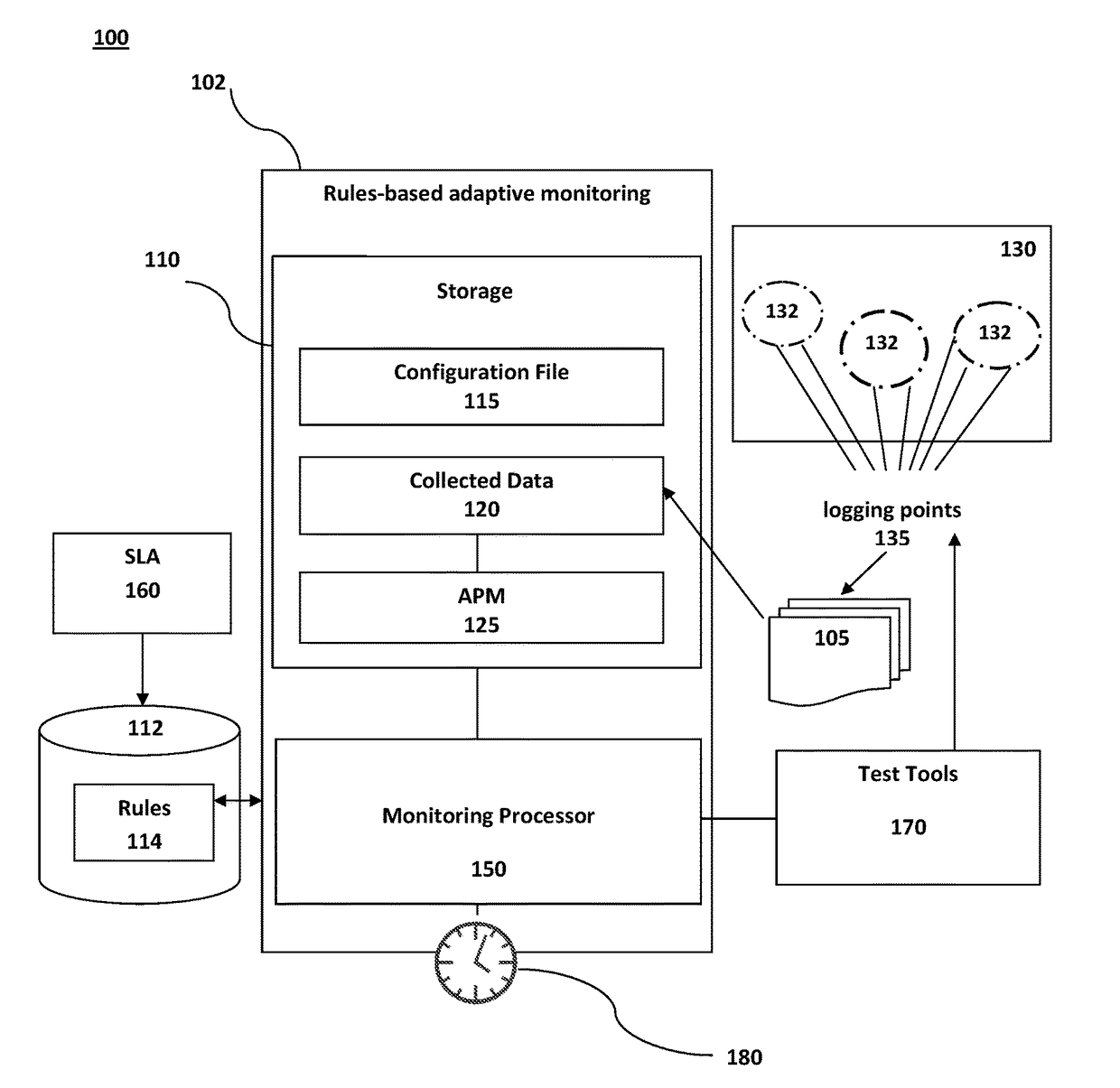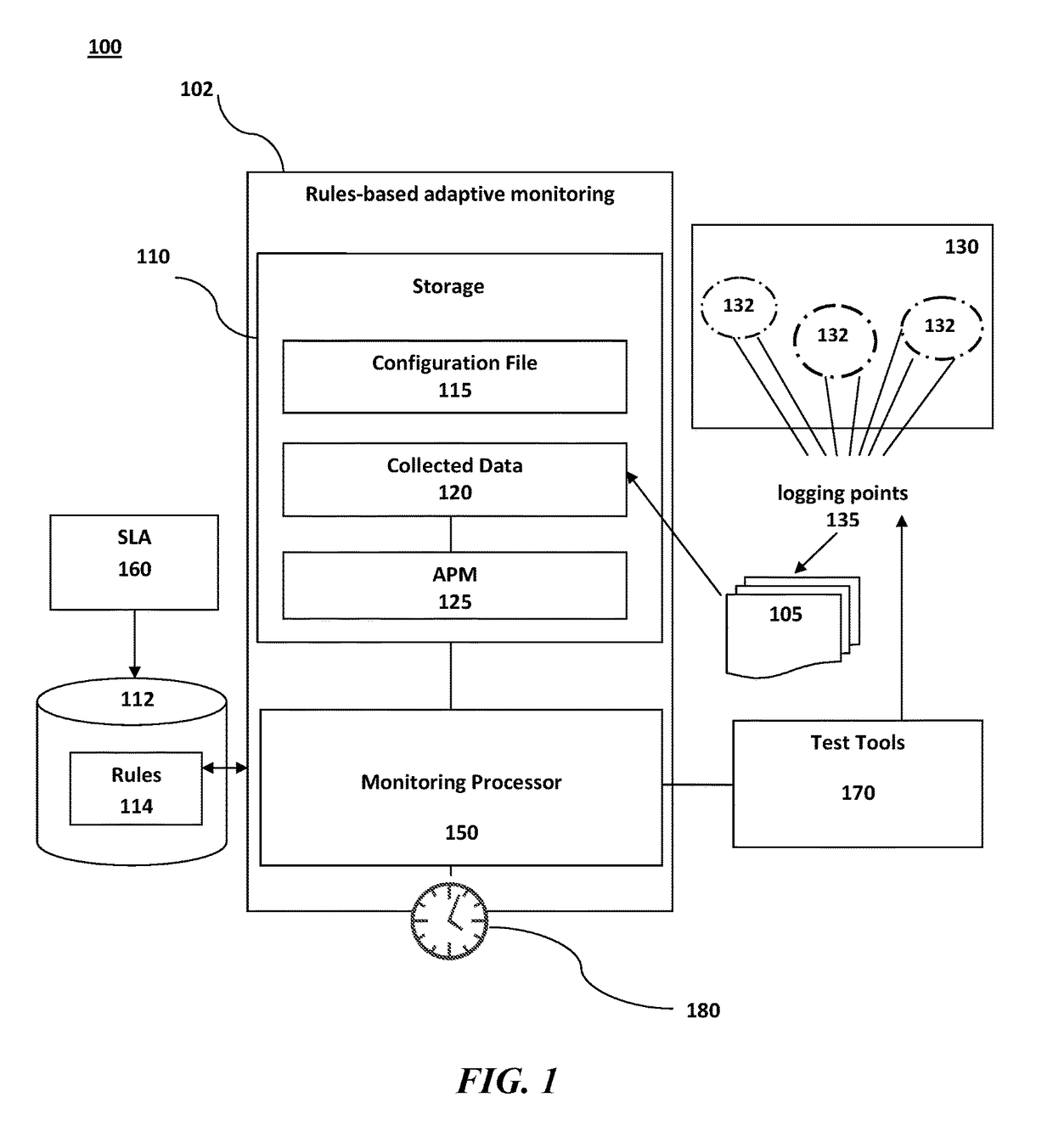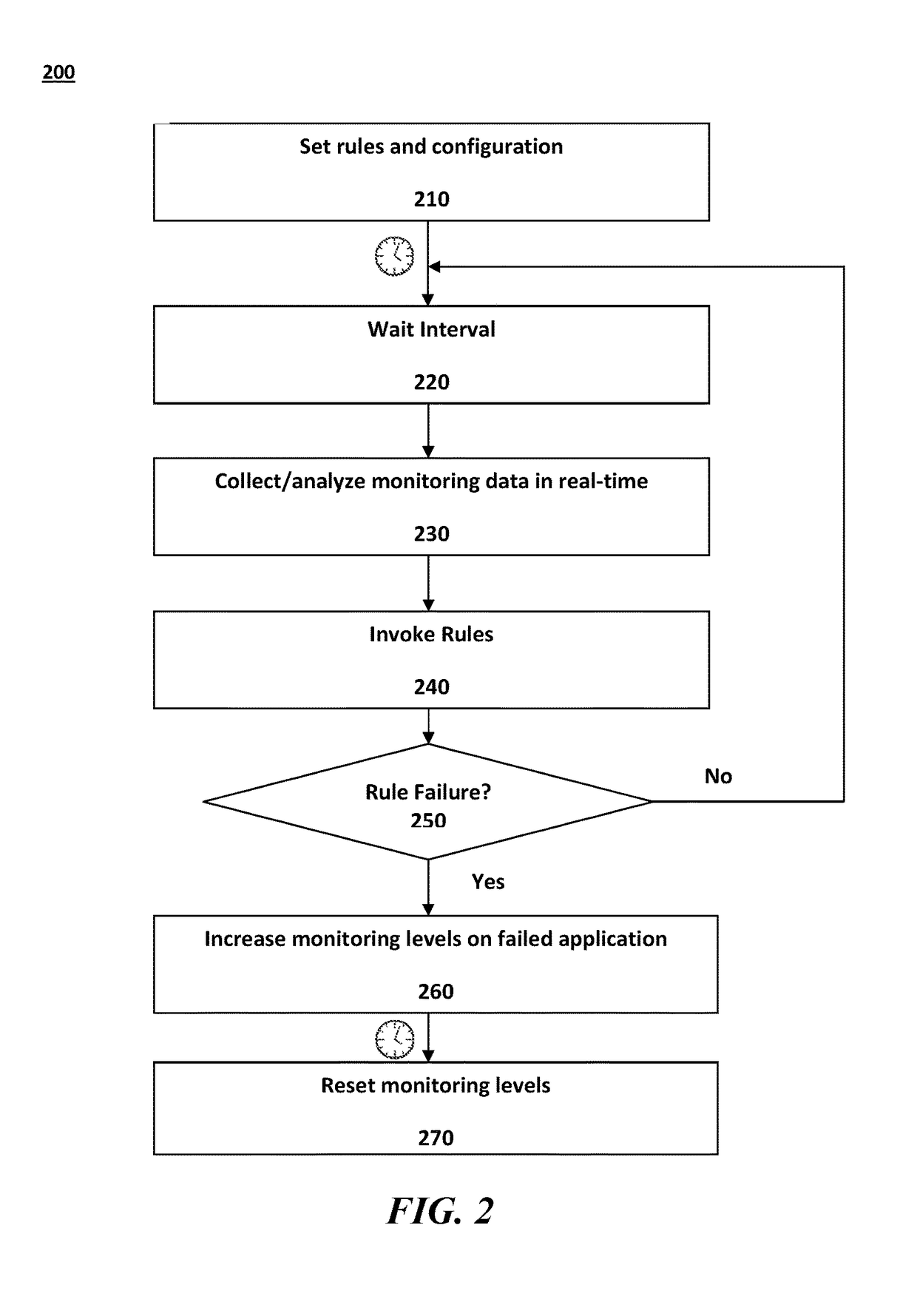Rule-based adaptive monitoring of application performance
a technology of application performance and monitoring level, applied in the field of performance engineering, can solve the problems of low monitoring level, complex performance engineering in today's large, distributed systems, affecting application and/or system performance, etc., and achieve the effect of increasing the amount of monitoring data
- Summary
- Abstract
- Description
- Claims
- Application Information
AI Technical Summary
Benefits of technology
Problems solved by technology
Method used
Image
Examples
Embodiment Construction
[0022]Complex distributed systems include multiple inter-dependent sub-systems, distributed across a vast array of components, such as middleware, applications, configuration files, operating systems, virtual machines, and others, all collaborating to attain a quality of service goal. Monitoring applications are essential tools to support the quality of service provided to the end user. Monitoring serves several purposes, such as detecting anomalies, potential shortages of resources or performance bottlenecks; guaranteeing Service Level Agreements (SLAs) regarding the performance or availability of the system; simulating the behavior and generating synthetic load; and tuning the running system by drilling down into its components.
[0023]Performance test tools monitor performance metrics tied to quality of service objectives, such as average response time, under peak workload conditions. The performance test software observes the behavior of complex workloads, such as the volume of tr...
PUM
 Login to View More
Login to View More Abstract
Description
Claims
Application Information
 Login to View More
Login to View More - R&D
- Intellectual Property
- Life Sciences
- Materials
- Tech Scout
- Unparalleled Data Quality
- Higher Quality Content
- 60% Fewer Hallucinations
Browse by: Latest US Patents, China's latest patents, Technical Efficacy Thesaurus, Application Domain, Technology Topic, Popular Technical Reports.
© 2025 PatSnap. All rights reserved.Legal|Privacy policy|Modern Slavery Act Transparency Statement|Sitemap|About US| Contact US: help@patsnap.com



